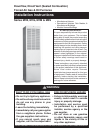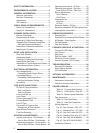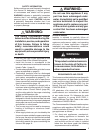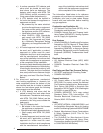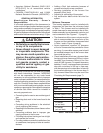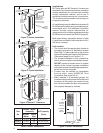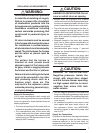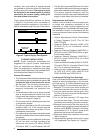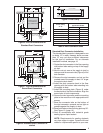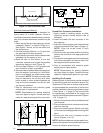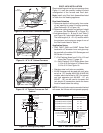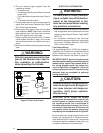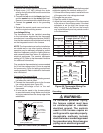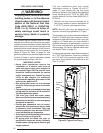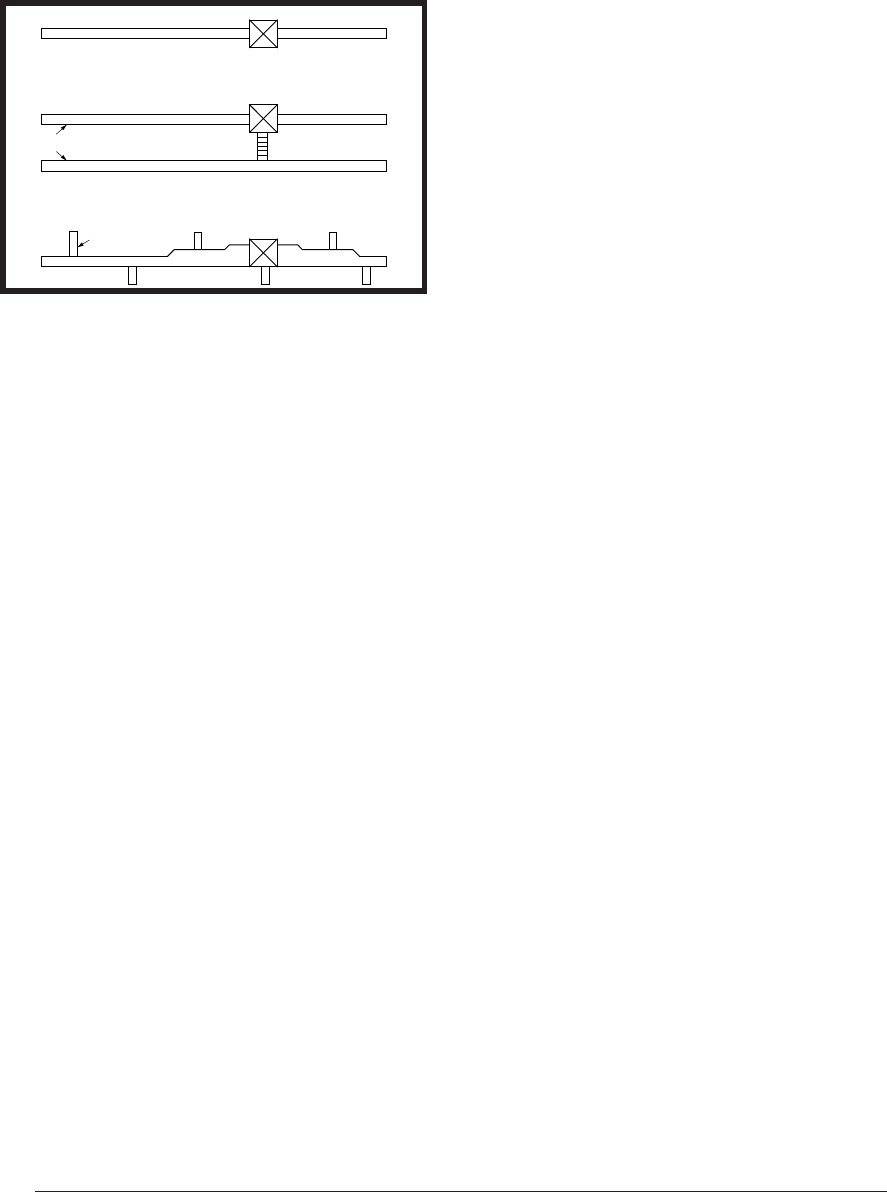
8
Location, size, and number of registers should
be selected on the basis of best air distribution
and fl oor plan of the home. The supply air must
be delivered to the heated space by duct(s)
secured to the furnace casing, running full
size and without interruption.
Three typical distribution systems are shown
in Figure 5. The location, size, and number of
registers should be selected on the basis of
best air distribution and fl oor plan of the home.
Figure 5. Typical Supply Duct System
A Single trunk duct
B
Dual trunk duct
w/crossover connector
C
Transition duct
w/branches
FURNACE INSTALLATION
NOTE: These Installation procedures are
suggested for typical furnace installations.
Since all installations are different from each
other, the sequence of instructions may differ
from the actual installation. Only qualifi ed HVAC
technicians should install this furnace.
General Information
• The furnace must be leveled at installation and
attached to a properly installed duct system. Do
not use the back of the furnace for return
air. See page 7 for circulating requirements.
• The furnace must be installed so that all
electrical components are protected from
water.
• The dimensions of the room or alcove must be
able to accommodate the overall size of the
furnace and the installation clearances listed
in Table 1 and Figure 3 (page 6)
• The furnace must be installed upstream from
a refrigeration system.
• The plenum attached to the A/C coil box and
ductwork within 3 ft. of the furnace must be
installed so that surfaces are at least 1/4” from
combustible construction.
• The cabinet plug must always be used to close
the hole in the side of the furnace when rotating
the inducer.
•
M1/M5 models must be installed with the Nordyne
A/C coil box which are listed according to the
cabinet size of the furnace: “B” cabinet - 920169,
“C” cabinet - 920171, and “D” cabinet - 920172.
• The M1 Series gas and M5 Series oil furnace
is certifi ed for use on wood fl ooring or supports,
but must be installed on top of a duct connector.
This factory supplied accessory must be
installed in the fl oor cavity and attached to the
supply air duct before the furnace is installed.
Requirements and Codes
Installer must be familiar with and comply with
all codes and regulations applicable to the
installation of these heating appliances and
related equipment. In the absence of local codes,
the installation must be in accordance with the
current provisions of one or more of the following
standards.
• Federal Manufactured Home Constructions
& Safety Standard (H.U.D. Title 24, Part
3280.707[a][2])
• American National Standard (ANSI-119.2/
NFPA-501C) for all recreational vehicle
installations.
• American National Standard (ANSI-Z223.1/
NFPA-54) and/or CAN/CSA B149 for all gas-
fi red furnace models.
• American National Standard (ANSI-Z95.1/
NFPA-31) and/or CSA B139 for all oil-fi red
furnace models.
• American National Standard (ANSI-C1/NFPA-
70) and/or CSA 22.1 Canadian Electric Code
Part 1 for all electrical fi eld wiring.
• Units have been researched under standards
UL 307A & B, UL727-1999, ANSI Z21.47b/
CSA 2.3b-2008, and CSA B140.10.
Locating and Cutting Duct Openings
Floor cut-outs and fuel line holes must be carefully
located to avoid misalignment of the furnace,
and vent piping. To locate standard ducts see
Figure 6 (page 9). For round ducts, see Figure 7.
1. Measure 10” from the rear wall or alcove and
mark the centerline of the cut-out on the fl oor.
2. Using the centerline as a starting point, draw
the rest of the duct cut-out to the dimensions
shown in Figures 6 or 7.
3. Cut out the fl oor opening 1/16” larger than
the actual cutout drawn. This will allow some
clearance when installing the duct connector.
4. Measure from the top of the fl oor down to the
top of the supply air duct to obtain the depth of
the fl oor cavity. NOTE: The depth of the fl oor
cavity shown as “X” in Figure 9 (page 9) will
determine the correct duct connector.
5. Determine which duct connector to use from
Table 3 (page 9).
6.
Measure and drill gas hole. and cut out for cooling
coil (if applicable). See Figures 6 or 7 (page 9).



